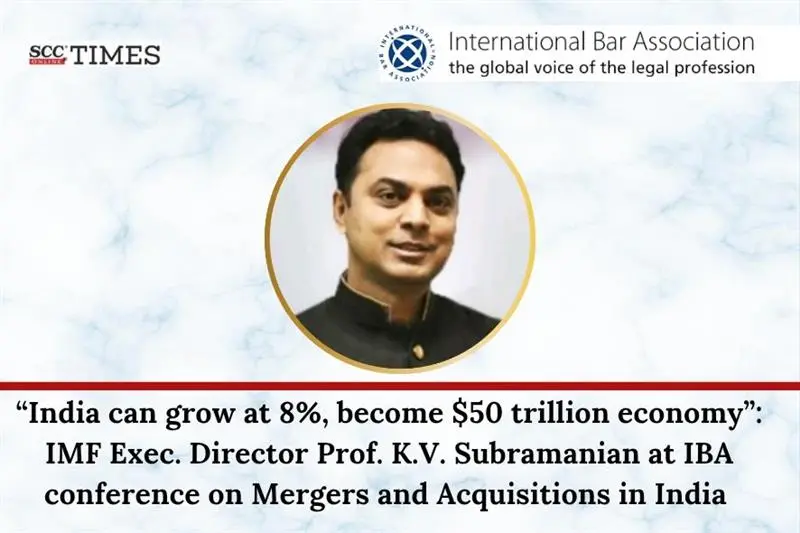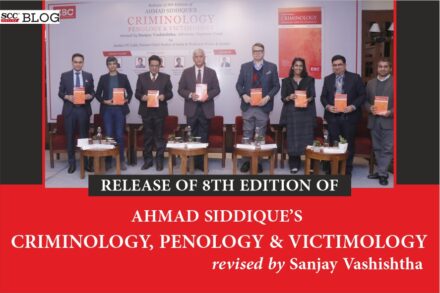Spanning over the course of 3rd and 4th April, the International Bar Association (‘IBA’) Corporate and M&A Law Committee organised a conference on ‘Mergers and Acquisitions in India: a key engine to the USD 30 trillion goal’ for bringing together various luminaries and distinguished legal professionals to discuss India’s roadmap towards becoming a 30 trillion-dollar economy.
In his keynote speech on ‘Make (it happen) in India: USD 30 trillion goal’, Prof. K.V. Subramanian, Executive Director, International Monetary Fund, Washington DC, briefly explained how India had phenomenal growth over the last 20-25 years by illustrating the economic development of Japan and China. He also reflected on his personal experience of seeing India change over the years as compared to the USA. He argued that India will have at least 6 percent growth, but 8 percent should be the aspiration.
Underscoring why he thought that India could have a 16-time increase in its Gross Domestic Product (‘GDP’), Prof. Subramanian talked about 8 percent growth, the impact of the lower inflation, and India’s inflation targeting regime. He stated that this analysis of inflation was relevant to the present discussion as it made a difference in the rate of depreciation of the rupee that will happen.
“Even during COVID and the Ukraine war, both of which were huge supply-side shocks, India’s inflation never exceeded 6.2 percent. When the rest of the globe, especially the advanced economies were having anywhere between two and a half to four times the historical average inflation, India had inflation less than its historical average despite those twin supply-side shocks. This shows the robustness of the regime that has been put in place.”
Furthermore, Prof. Subramanian explained how inflation essentially reduces the purchasing power of a currency and why the currency had to depreciate to maintain its purchasing power in real terms. He elaborated on how the rate of growth in dollars would be 12 percent in the future and according to the rule of 72, the GDP in nominal dollars in India would double every 6 years. He highlighted the importance of compounding and that compounding empowered ambition.
“The difference in inflation between two countries has had a one-for-one impact on the rate of currency depreciation.”
“If you grow at 6 percent, we will be close to that 30 trillion dollars target. But if we can grow at 8 percent, which is what is India’s potential, then we can be a 50 trillion-plus economy.”
Explaining why India can grow at 8 percent, Prof. Subramanian outlined three drivers of economic growth:
-
Formalisation— He underscored how most of the growth in Europe and the US has been from productivity improvement or frontier growth as these economies are very formal, thus the investment rate has been more or less the same because growth comes from the investment, and the return on that investment. This growth was different from the growth in countries like China and India as they would mostly be catching up with the frontier growth, especially on formalisation. He remarked that 75-80 percent of the Indian economy was still informal and if even 50 percent of the economy was formalised, it would act as a huge growth driver.
“Anywhere between three-quarters to 80 percent of the Indian economy is still informal. And formalisation is a big driver of productivity improvements. So, if we get from around 75-80 percent informal to even 50 percent, that itself will be a huge growth driver.”
-
Credit Creation— He pointed out that the average global credit to GDP ratio as of 2020 was about 150 percent. In other words, if a country’s GDP was $100, credit in the economy was $150. But the average for India was 68. Thus, there was enormous potential for credit to increase. He remarked that if there are new borrowers who have not been given credit by the financial system, those are the ones that will set up businesses and drive productivity growth. This would be the second driver of growth.
-
Entrepreneurship— Prof. Subramanian stated that Indian firms would be catching up with the productivity of global firms through innovation and entrepreneurship. He remarked that India already had the third-largest entrepreneurial ecosystem in the world. Furthermore, according to the Global Innovation Index, which gives rankings for the level of innovation in an economy, India used to be ranked around 85th, but now it is ranked 39th. He remarked that India, as the fifth largest economy, should aspire to be in the top 10 in innovation.
In conclusion, he expressed that 6 percent growth was not good enough as India had the potential to deliver 8 percent growth and thereby become a $50 trillion economy. He remarked, “We have done the plumbing for a lot of this in the last 10 years. Therefore, now good policy can indeed deliver that 8 percent growth and thereby make us the $50 trillion economy. By then we will be rubbing shoulders with the best in the world and have an economy that actually fits the philosophical ethos of a nation that has an enormous history and a great future.”






